The region is rich in Greek mythology and legends, as can be seen from the names of some cities, as is visible in the remains of the colonies of Paestum (ancient Poseidonia) and Velia (Elea). The latter was also the seat of “Eleati”, a school of pre-Socratic philosophers such as Parmenides, Zeno of Elea and Melisso di Samo.
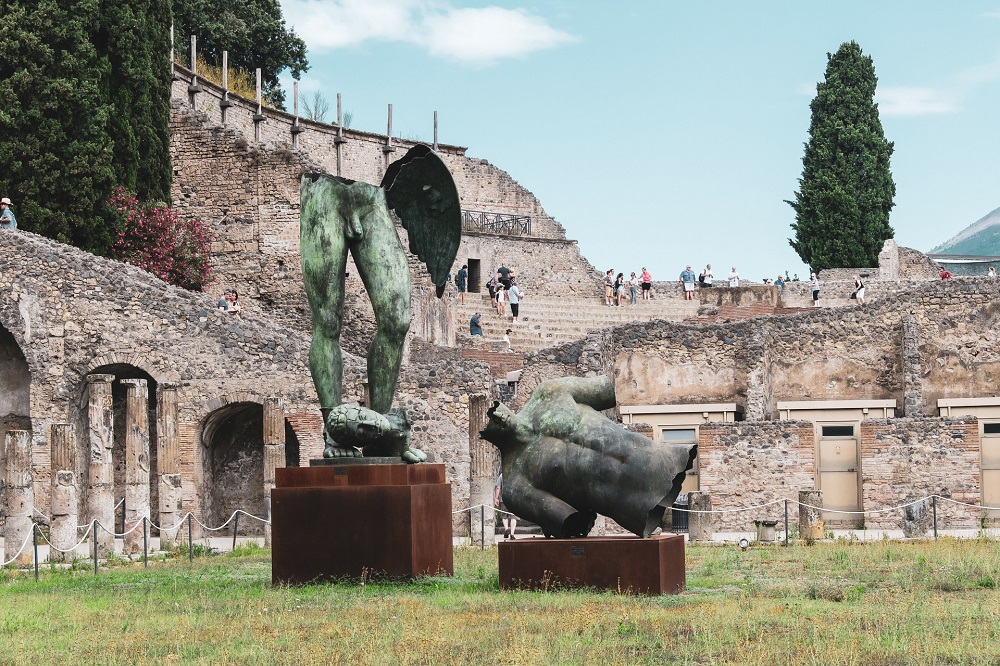
Once known for her heroes, philosophers, bandits, and patriots, today’s Cilento is a place of natural beauty little known to the rest of the world, but still retaining her enchanting and mysterious scenery. The importance of the region echoes in the writings of the ancient civilizations that once prospered in and around the area. Myths and history abound, such as the story of Enea’s helmsman, Palinuro. Palinuro was in charge of piloting Enea’s boat after escaping the siege of Troy. As the legend goes, Palinuro was lulled asleep off the coast of Cilento and fell in the water during a violent storm. For three days and nights he struggled in the rough waters, being kept afloat by the wooden rudder of the boat. Upon finally reaching the shore, Palinuro was savagely killed by the locals. Cape Palinuro, as the area of his landing is now known, has a myriad of sea caves and other natural wonders only accessible by boat.
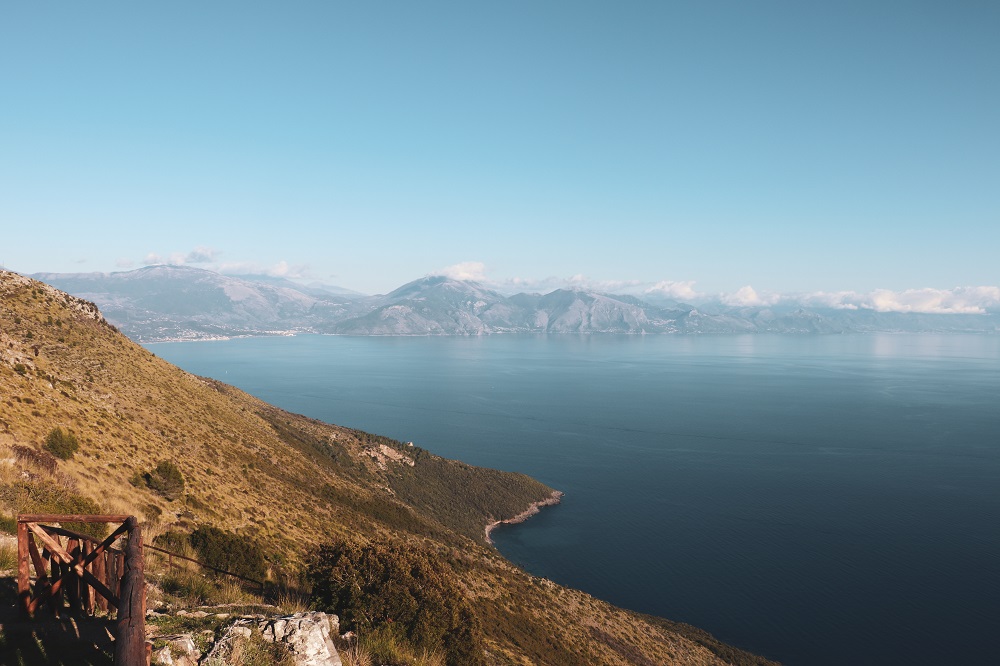
The reputation of Cilento’s original inhabitants is also reflected in the writings of the philosopher Zenone, one of the members of the philosophy school at Elea (now known as Velia), then considered the most important philosophy school in the Greek world. 2500 years ago, Zenone wrote to his mentor describing the inhabitants of Cilento: “The people of Cilento belong to their land in the same way that that the local plants belong to its soil, they both share the same attributes. Like the local olive trees, they grow strong and full of life, and share in the abundance of their fruit without too much concern as to who is picking it. Often, just like the olive trees, they endure suffering and wounds, but they will be unmoved in their resolve, as they bear their pain in silence. They follow the rhythm of nature around them, and even when nature turns unkind, they adapt to the new conditions and will prosper and propagate right where the damage was strongest.” Zenone’s mentor, upon hearing such a description replied: “Let us hope for our sake that the people of Cilento will never change their ways and always want to belong to the land instead of wanting the land to belong to them.”
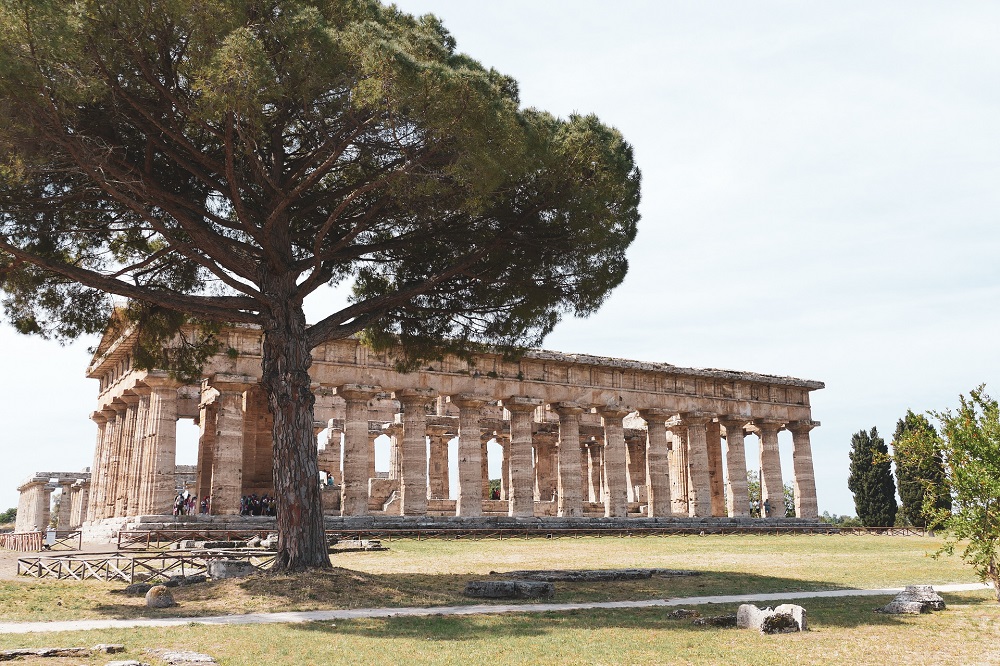
The second largest park in Italy, the Cilento and Vallo di Diano National Park, extends from the Tyrrhenian coast to the foot of the Campania-Lucan Apennines and preserves numerous traces of the ancient presence of man. Thanks to the extraordinary naturalistic characteristics it was included in 1998, together with the archaeological sites of Paestum and Velia and the Certosa di Padula, in the Unesco world heritage list .
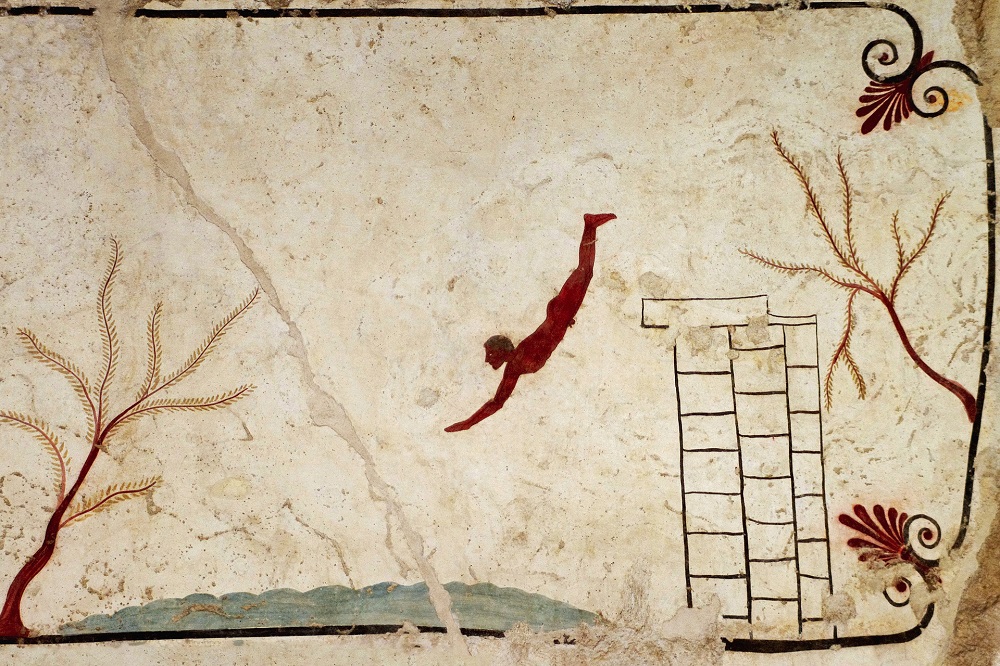
The first humans inhabited the Cilento region almost 500 thousand years ago, living in the numerous caves found along the Cilento coastline. The earliest traces and artifacts found date back to the Stone Age (Paleolithic) with some items being dated between 35 and 70 thousand years old). In the town of Camerota archaeologists have found burial sites from that era, and the remains have been aptly named as those of “Homo Camaerotensis” . Additional archaeological discoveries date as far back as the Neolithic period (8500 years ago) and others bring testament to the dawn of the Iron Age in this part of the world. Closer study of these artifacts illustrate that the people of Cilento did not evolve in isolation, but were an important crossroad to people and merchants from many different civilizations in the Mediterranean. In the towns of Capaccio and Paestum, burial sites were adorned with the typical offerings of the Local Gaudo civilization. Other items found nearby were typically produced in areas such Puglia, (the “whole” region of italy) or the Lipari islands. Some of the other Mediterranean civilizations that colonized the Cilento area are the Enotri, the Lucanians and the Greeks (brought here by their need for copper ore). Very few places around the world have had so many cultures and civilizations coming together, exchanging goods and ideas. Cilento can be considered one of these places, and as such, it makes it the cradle of ancient European civilization.
The region is rich in Greek mythology and legends, as can be seen from the names of some cities, as is visible in the remains of the colonies of Paestum (ancient Poseidonia) and Velia (Elea). The latter was also the seat of “Eleati”, a school of pre-Socratic philosophers such as Parmenides, Zeno of Elea and Melisso di Samo.


The second largest park in Italy, the Cilento and Vallo di Diano National Park, extends from the Tyrrhenian coast to the foot of the Campania-Lucan Apennines and preserves numerous traces of the ancient presence of man. Thanks to the extraordinary naturalistic characteristics it was included in 1998, together with the archaeological sites of Paestum and Velia and the Certosa di Padula, in the Unesco world heritage list .
Once known for her heroes, philosophers, bandits, and patriots, today’s Cilento is a place of natural beauty little known to the rest of the world, but still retaining her enchanting and mysterious scenery. The importance of the region echoes in the writings of the ancient civilizations that once prospered in and around the area. Myths and history abound, such as the story of Enea’s helmsman, Palinuro. Palinuro was in charge of piloting Enea’s boat after escaping the siege of Troy. As the legend goes, Palinuro was lulled asleep off the coast of Cilento and fell in the water during a violent storm. For three days and nights he struggled in the rough waters, being kept afloat by the wooden rudder of the boat. Upon finally reaching the shore, Palinuro was savagely killed by the locals. Cape Palinuro, as the area of his landing is now known, has a myriad of sea caves and other natural wonders only accessible by boat.
The reputation of Cilento’s original inhabitants is also reflected in the writings of the philosopher Zenone, one of the members of the philosophy school at Elea (now known as Velia), then considered the most important philosophy school in the Greek world. 2500 years ago, Zenone wrote to his mentor describing the inhabitants of Cilento: “The people of Cilento belong to their land in the same way that that the local plants belong to its soil, they both share the same attributes. Like the local olive trees, they grow strong and full of life, and share in the abundance of their fruit without too much concern as to who is picking it.
Often, just like the olive trees, they endure suffering and wounds, but they will be unmoved in their resolve, as they bear their pain in silence. They follow the rhythm of nature around them, and even when nature turns unkind, they adapt to the new conditions and will prosper and propagate right where the damage was strongest.” Zenone’s mentor, upon hearing such a description replied: “Let us hope for our sake that the people of Cilento will never change their ways and always want to belong to the land instead of wanting the land to belong to them.”

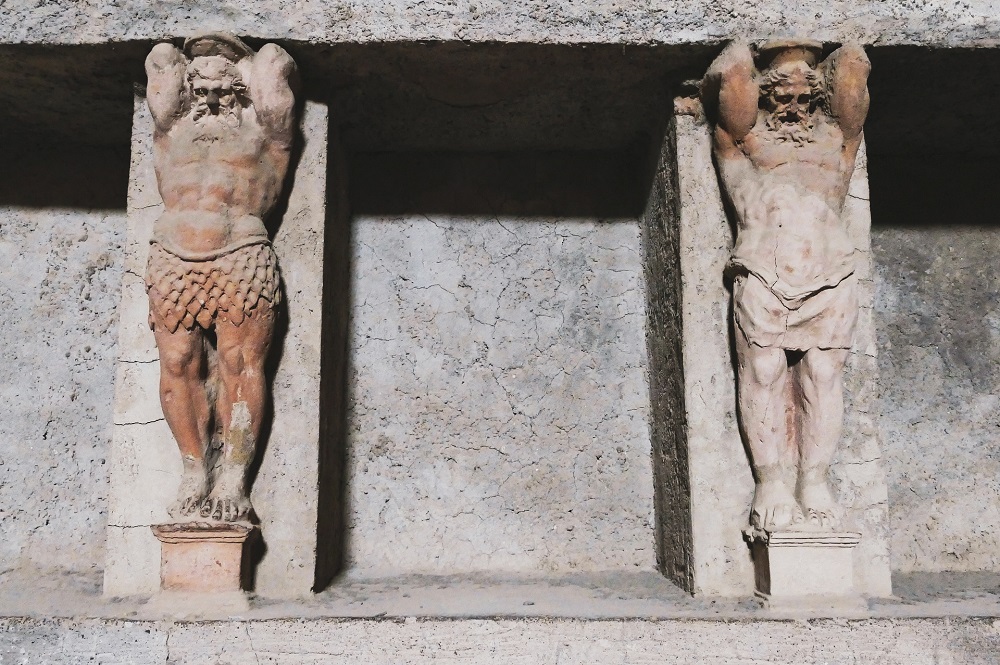
The first humans inhabited the Cilento region almost 500 thousand years ago, living in the numerous caves found along the Cilento coastline. The earliest traces and artifacts found date back to the Stone Age (Paleolithic) with some items being dated between 35 and 70 thousand years old). In the town of Camerota archaeologists have found burial sites from that era, and the remains have been aptly named as those of “Homo Camaerotensis” . Additional archaeological discoveries date as far back as the Neolithic period (8500 years ago) and others bring testament to the dawn of the Iron Age in this part of the world. Closer study of these artifacts illustrate that the people of Cilento did not evolve in isolation, but were an important crossroad to people and merchants from many different civilizations in the Mediterranean. In the towns of Capaccio and Paestum, burial sites were adorned with the typical offerings of the Local Gaudo civilization. Other items found nearby were typically produced in areas such Puglia, (the “heel” region of italy) or the Lipari islands. Some of the other Mediterranean civilizations that colonized the Cilento area are the Enotri, the Lucanians and the Greeks (brought here by their need for copper ore). Very few places around the world have had so many cultures and civilizations coming together, exchanging goods and ideas. Cilento can be considered one of these places, and as such, it makes it the cradle of ancient European civilization.

Founded by the Greeks around 600 BCE, initially called Poseidon, Poseidon, or Neptune, god of the sea, to whom the city was dedicated. Between 400 and 273 forward was occupied by an Italic population of Lucania. In 273 it became a Roman colony under the name of Paestum. But there is no doubt that the foundation of the city was preceded by the installation of a commercial farm on the left bank and at the mouth of the river Silaros and that the conditions of the terrain induced malarial then the primitive settlers to move the town to the east, on a bench calcareous slightly raised on the plains and on the coast, along the course of another smaller river (the Salty river or Capofiume). By the plant on Silaros developed the primitive sea and river ports of the city and it was built at the Temple of Hera of Argos, which soon became one of the largest and most revered shrines of ancient Italy: about 50 stages separated the city from the Heraion and the his emporium on fiume.La end of the Roman Empire coincided roughly with the end of the city. Around 500 CE, in fact, following an outbreak of malaria, aggravated dall’insalubrità of the territory, the inhabitants gradually abandoned the city. The rediscovery of Paestum back to 1762, when it was built the modern road running through it still.
Origins of historical events and main of Paestum:
The Greek colonies in the Mediterranean, the most important were those based in Asia Minor and Magna Grecia, a term that refers to a set of cities founded by the Greeks in southern Italy and Sicily, one of which was precisely Paestum. Paestum was the motherland of Sybaris, founded in 720 BCE by the Achaean and Trezeni, who were therefore called sybaritic. These were famous for wealth, luxury and pride. The historian Diodorus, of the first century. BCE, wrote that ‘the sybaritic were slaves belly and lovers of luxury’. Strabo, geographer greek lived between 60 and 20 forward, said the sybaritic had created a fortified settlement near the mouth of the Sele River, extending their influence over neighboring territories. We’re riding in the seventh and sixth centuries. aEVLa foundation of the city was due to the need to Sybaris had to open up a trade route between the Ionian and the Tyrrhenian Sea through the dorsal de Particular metope depicting the killing of Alcyoneus at the hands of Heracles. (Narrator Museum of Argive Hera)ll’Appennino, avoiding the circumnavigation of the Calabrian coast and the Strait of Messina.La colony, located at a point strategic, in the middle of the intersection of trade routes between the Ionian basin and regions Italic, was called Poseidonia in honor of Poseidon, god of the sea. It was in 510 BCE, following the destruction of Sybaris by the work of Crotone, when many fled to sybaritic Poseidon with their wealth, their experience and their spirit of enterprise, the city reached a high level of economic and political power. From this period dates the construction of the three temples known by the name of the Basilica, Temple of Poseidon and the temple of Ceres, contemporary fresco greek to that so far discovered in the tomb of the diver. In the fifth century BC Lucan, Italic people began to infiltrate the colony, leaving many traces of its influence in the frescoed tombs according to the model of the Greek masters. At the end of the fourth century, allied with bruzi, sustained a long struggle against the Greeks for the domain of the new territories towards the sea, which ended with a reaffirmation of their supremacy over the city. In 273 BCE, the Romans occupied Poseidonia who thus became the loyal Roman Paestum, which proved to be close to Rome even in the most dramatic moments in its history. During the Roman period, in the third century, the economic and cultural activities flourished again: created new public buildings, such as the amphitheater, the forum and the gymnasium, which helped give the city the aspect that the excavations have brought to light. Among the factors that led to the decline of Paestum, the construction of new roads for trade in the East, which ended up hopelessly isolate the city’s main shopping streets, and the epidemic of malaria in the ninth century, combined with raids by Saracen pirates, that forced the pestani to take refuge in the mountains, and to abandon the ancient Poseidonia.
The Land of Myth
The ancient city of Elea-Velia, noted in the mid 17th century by Lucas Holstenius was, together with nearby Paestum, the object of interest for many scholars and travellers, like the Danish theologist Mùnter, the Duke of Luynes, Lenormant and Schleuning, who from the 700s onwards explored beyond the usual itinerary of the Grand Tour, undertaking adventurous journeys in search of those mythical places celebrated by Homer in the Odyssea and by Virgil in the Aeneid.
The Mediterranean and, in particular, the coasts of Southern Italy, with their rare and marvellous landscapes, were the backdrop for the adventures of Ulysses and Aeneas, for their fantastic and still relevant story, that of man and his journey into the unknown.
Consecrated forever to myth, these lands, inhabited by a myriad of divinities and fantastic creatures like nymphs, satyrs, sirens and terrible monsters which populated the woods, rivers and seas, still today evoke their glorious past in the popular traditions, in the rituals and place names.
It is, in fact, near to Velia that Aeneas’ helmsman, Palinurus, loses his life by falling into the sea off the promontory by the same name and further north, around the island off Punta Licosa, that the spirit of Leucosia still wanders, the siren enchantress who took her own life following her failed attempt to seduce Ulysses, whilst at Paestum, at the mouth of the river Sele, Jason and his Argonauts, on return from their journey, founded the sanctuary dedicated to the Goddess Hera.
The Foundation of Elea
According to Herodotus, around 540 BC the Ionians in flight from Phocaea, the city of Asia Minor besieged and conquered by the Persians in 545 BC, came in search of political freedom in a new homeland and founded “a city in Enotria” (the land of wine).
The city was first named Hyele after a local spring, then Elea and finally Velia in Roman times.
Before numerous floods had modified considerably the contour of the land, contributing to the withdrawal of the coastline, the promontory where the city’s Acropolis stood stretched far out into the sea between two wide gulfs: to the south the gulf formed by the Fiumarella and to the north the gulf formed by the Palistro which then had its own course, independent from the river Alento.
So the Alento plain we see today was once a wide bay dotted with little islands, according to the descriptions provided by various documentary sources.
The first archaeological digs were begun by Amadeus Maiuri only at the start of the 10th century, digs which have brought to light a mere on fifth of the city area.
Velia was one of the most important centres of the Magna Graecia, famous in ancient times for its School of Medicine and Philosophy and homeland of illustrious men such as Parmenides and Zeno who here laid down the premises for modern philosophy.
The city lay-out
The city walls, alternated by square towers, date back to the 6th century and stretch for about 9 kms, following the morphology of the land and using precise keypoints of the land so as to enhance its defensive attributes, as in the case of the Porta Rosa arch and the Castelluccio tower fortification.
Before the large-scale urban modifications of the classic era transformed the hill of the Acropolis into a place destined exclusively to worship, it was entirely occupied by the ancient urban centre, the primitive nucleus of the city, a part of which has been preserved on the eastern slopes of the Acropolis, the so-called “Polygonal Village”, a settlement characterized by narrow streets and a wide road lined by houses and workshops arranged in tiers.
In around 480 BC an impressive tiered wall was built over this ancient centre on occasion of the new layout for the Acropolis which comprised the creation of a large terrace and the construction, perhaps never finished, of the so-called Athenian temple. Its wide stereobate rests on the foundations of a 6th century sanctuary of which a fair section of wall in “lesbian polygonal” is still visible.
With the realization of the great urban works during the Hellenistic era (3rd century BC) which involved the whole city, the Acropolis’ monumental impact was further enhanced by the construction of the theatre and porticoes.
Moreover, along the entire ridge lined by the city walls, from the Acropolis to the Castelluccio fortified tower, sanctuaries and sacred gathering places grew up one after the other on large terraces, with open altars where sacrifices were made to the gods.
Here divinities such as Athena, Poseidon Asphaleios, Hera, Zeus, Dionysus and Persephone.
The ridge of the Acropolis divided the city into two districts, southern and northern, which were linked by an important artery: the paved road which from Porta Marina South, crossing the port district, came out onto via di Porta Rosa and going beyond Porta Arcaica and Porta Rosa, led to the Northern Quarter as far as Porta Marina North. Close by would have been the river port at the ancient mouth of the Palistro.
The Southern Quarter presents substantial stratifications due to the continual detrital changes caused by violent floods which several times destroyed this part of the city from the 6th centry BC up until the Roman era.
This district presents three blocks (insulae) with dwellings and workshops, one of which is entirely occupied by a grandiose architectural complex from the 1st century BC with cryptoporticus and a hanging garden, perhaps set aside for imperial cult.
The northern edge of the district is dominated by a attractive bath building from the 2nd century BC with mosaiced rooms, in front of which a round pit for offerings or bothros can be found, known as the “Sacred Well”, perhaps dedicated to Eros.
Along the road of Porta Rosa, to the left and to the right, two districts are arranged on terraces in a grid pattern, designed according to the urbanistic theories of Hippodamus of Mileto. Here the remains of important public and residential buildings can be found, in particular the Asclepeion – thought to be the seat of the School of Medicine and Philosophy – and a rare example of a bath building from the Hellenistic period, located downstream from the Sacred Spring, the famous stream dedicated to the Nymph Yele.
But the most famous monument of the city and of the whole Magna Graecia is the impressive Porta Rosa, an example of rare beauty and harmony which documents the use of the arch technique by the Greeks.
Historical background
After its foundation, the city of Elea enjoyed a period of great prosperity, as demonstrated by the great works realized between the 5th and 3rd centuries AC. The city, equipped with efficient ports, which Virgil mentions in the Aeneid, was on important maritime routes between Greece and the colonies along the Mediterranean coast and had dealings with Cuma and Neapolis (Naples), but also with Massalia (Marseille) which like Alalia in Corsica and Ampurias in Spain, was likewise founded by the Phocaeans.
The economic decline of the centres of the south Tyrrhenian began in the 2nd century BC with traffic centering more around the gulf of Naples and north of Ostia. Velia nonetheless maintained a certain volume of traffic which only later diminished when its celebrated ports gradually began to silt up.
In its period of greatest splendour the city, once home to Xenophanes of Colophone, saw the formation of a philosophical and literary circle frequented by illustrious philosophers, the most notable exponents being Parmenides and Zeno who were also born here. Related to the philosophical school of Elea a renowned medical school grew up, active for many centuries, whose principles were passed on in the Middle Ages to the Medical School of Salerno.
Some inscriptions and marble portraits of Elean doctors bear witness to the presence o a ghenos or clan of doctors (Ouliadai) similar to those of Cos (Asklepiadai).
There most probably was an Asklepieon (healing temple) linked to the city’s various bath houses, thanks to which Velia’s notoriety still continued into the Roman era.
In fact, towards the middle of the 1st century AD the cold spa waters of Velia in winter and those of Chiusi and Gubbio in summer replaced the hot waters of Baia and ancient Elea became a famous health and holiday resort where people would come to heal body and spirit.
The city of Velia, which was founded out of a desire for freedom, always maintained this ideal and succeeded, more by means of diplomacy than war, in avoiding occupation either by the Poseidonians or the Lucanians.
In 389 BC Velia was part of the Italiot league, coming to the aid of Caulonia when it was attacked by Dionysus I, the tyran of Siracuse, and was later Rome’s ally during the 1st and 2nd Punic wars (210 BC).
In 88 BC Cicerone, who was staying there with his friend Trebazio, informs us that the women priests who practised the cult of Cerere in Rome came from Neapolis and Velia.
The refined Hellenistic culture must have held much fascination for the Romans: in fact, despite the strong presence of the Roman culture, Velia always conserved its Greek character, both in its traditions and its language (“Graecia capta ferum victorem cepit” the poet Horace said in celebrated verse).
But as for other cites in that period, the curtain slowly came down on Velia; from the early imperial age onwards the city gradually diminished in numbers and importance. Many districts were abandoned; the original urban layout was ignored by the Byzantine centre which grew up on a layer of ruins; the ancient buildings and the walls were robbed of their materials, then used to make hasty constructions, and the marble statues were ground down to make mortar. Nonetheless, Velia remained the most important centre of the Tyrrhenian south of Salerno and like Paestum was a diocesan seat (5th Century AD).
At the time of the barbaric invasions it was attacked by Goths and then Vandals and was occupied by the Byzantines and then the Longobards.
Between the 9th and 10th centuries, a castle stood on the far edge of the promontory, site of Velia’s ancient Acropolis. It dominated the whole area and controlled the ancient port of San Matteo ad duo flumina (between two rivers), at the time still operative.
Around the castle, which represented a valid fortification of that part of Cilento, a fortified hamlet grew up with the church of San Quirino. Its decline coincided with the advent of Norman and Swabian rule.
In Angevin times a round tower on three levels was built. Its keep incorporated the stereobate of the ancient Greek temple; in Aragonese times a crenellated wall was added to the base of the tower. This building, which has reached the present times virtually intact, represents a fine example of 13th century military architecture.
The hamlet of Castellamare still existed around the tower, until in 1458 Ferdinando I gave orders for the city to be evacuated, judging it too vulnerable to pirate raids. Consequently, in 1500 at the time of the King’s general census, just a hundred or so households could be counted.
The gradual process of abandonment was thus accelerated, probably due equally to the unhealthy environment created by the swamps which surrounded the promontory as well as to the pirate threat. To such an extent that in 1648 the tax registers recorded just 12 households and in 1669 the locality was entirely deserted.
An ancient city located in what is now the comune of Pompeii near Naples in the Campania region of Italy.
Largely preserved under the ash, the excavated city offered a unique snapshot of Roman life, frozen at the moment it was buried, and an extraordinarily detailed insight into the everyday life of its inhabitants, although much of the evidence was lost in the early excavations. It was a wealthy town, enjoying many fine public buildings and luxurious private houses with lavish decorations, furnishings and works of art which were the main attractions for the early excavators. Organic remains, including wooden objects and human bodies, were entombed in the ash. Over time, they decayed, leaving voids which archaeologists found could be used as mould to make plaster casts of unique — and often gruesome — figures in their final moments of life. The numerous graffiti carved on the walls and inside rooms provide a wealth of examples of the largely lost Vulgar Latin spoken colloquially at the time, contrasting with the formal language of the classical writers
Pompeii is a UNESCO world heritage SITE and is one of the most popular tourist attractions in Italy, with approximately 2.5 million visitors annually.
After many excavations prior to 1960 that had uncovered most of the city but left it in decay, further major excavations were banned and instead they were limited to targeted, prioritised areas. In 2018, these led to new discoveries in some previously unexplored areas of the city.
Origins of historical events and main of Paestum:
The Greek colonies in the Mediterranean, the most important were those based in Asia Minor and Magna Grecia, a term that refers to a set of cities founded by the Greeks in southern Italy and Sicily, one of which was precisely Paestum. Paestum was the motherland of Sybaris, founded in 720 BCE by the Achaean and Trezeni, who were therefore called sybaritic. These were famous for wealth, luxury and pride. The historian Diodorus, of the first century. BCE, wrote that ‘the sybaritic were slaves belly and lovers of luxury’. Strabo, geographer greek lived between 60 and 20 forward, said the sybaritic had created a fortified settlement near the mouth of the Sele River, extending their influence over neighboring territories. We’re riding in the seventh and sixth centuries. aEVLa foundation of the city was due to the need to Sybaris had to open up a trade route between the Ionian and the Tyrrhenian Sea through the dorsal de Particular metope depicting the killing of Alcyoneus at the hands of Heracles. (Narrator Museum of Argive Hera)ll’Appennino, avoiding the circumnavigation of the Calabrian coast and the Strait of Messina.La colony, located at a point strategic, in the middle of the intersection of trade routes between the Ionian basin and regions Italic, was called Poseidonia in honor of Poseidon, god of the sea. It was in 510 BCE, following the destruction of Sybaris by the work of Crotone, when many fled to sybaritic Poseidon with their wealth, their experience and their spirit of enterprise, the city reached a high level of economic and political power. From this period dates the construction of the three temples known by the name of the Basilica, Temple of Poseidon and the temple of Ceres, contemporary fresco greek to that so far discovered in the tomb of the diver. In the fifth century BC Lucan, Italic people began to infiltrate the colony, leaving many traces of its influence in the frescoed tombs according to the model of the Greek masters. At the end of the fourth century, allied with bruzi, sustained a long struggle against the Greeks for the domain of the new territories towards the sea, which ended with a reaffirmation of their supremacy over the city. In 273 BCE, the Romans occupied Poseidonia who thus became the loyal Roman Paestum, which proved to be close to Rome even in the most dramatic moments in its history. During the Roman period, in the third century, the economic and cultural activities flourished again: created new public buildings, such as the amphitheater, the forum and the gymnasium, which helped give the city the aspect that the excavations have brought to light. Among the factors that led to the decline of Paestum, the construction of new roads for trade in the East, which ended up hopelessly isolate the city’s main shopping streets, and the epidemic of malaria in the ninth century, combined with raids by Saracen pirates, that forced the pestani to take refuge in the mountains, and to abandon the ancient Poseidonia.

Unique Cooking Experience
Get Married in Cilento
Olive Oil Tour
Wine Tour
Historical Tour
Active Tour